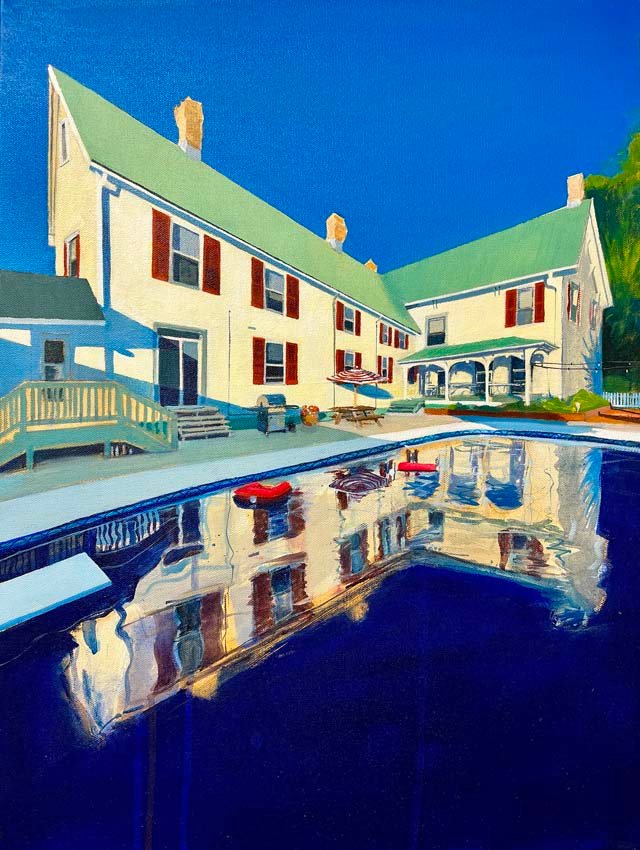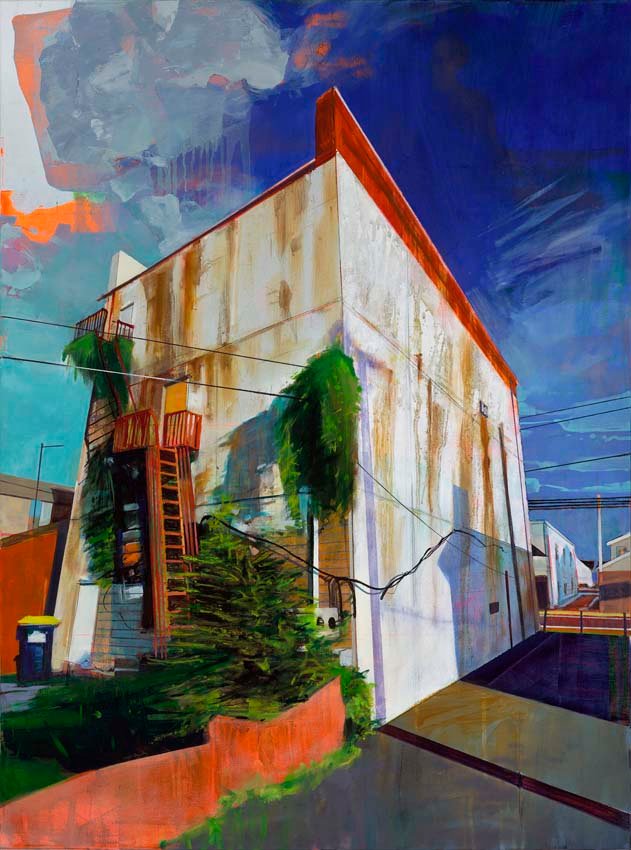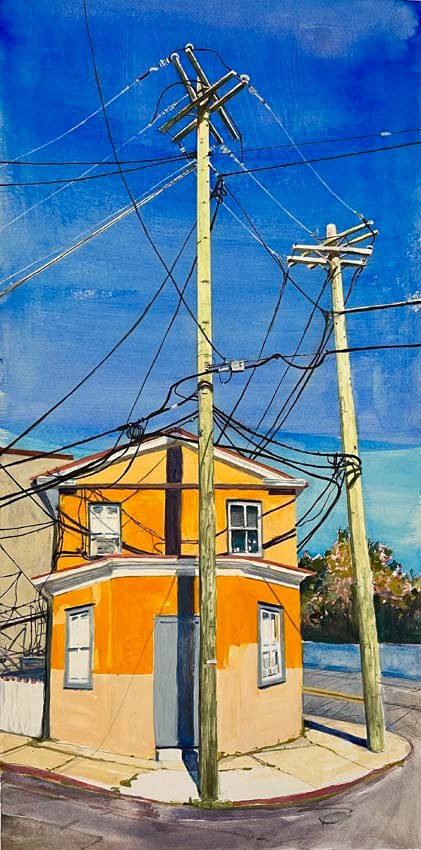+ By Desiree Smith-Daughety + Photos courtesy of Marc Roman
For artist Marc Roman, art is the symbiosis of inspiration and skill. “Talent is involved, but it’s work,” he says. “The skill comes from standing in front of an easel and putting in hundreds of hours.”
For him, everything he views has a literal “glow” to it, especially outdoors, which might explain his fascination with light and shadow. “I can be anywhere and be inspired,” says Roman. “There are what I call slices or vignettes that would make interesting compositions. The slice itself may be marginally interesting, as is the case with the photos I take. The magic happens in the transmuting of that image into a piece of fine art—it really is a kind of visual alchemy.”
A one-week trip might result in 5,000 photos taken by Roman. Apparently, he is notorious for doing that and cannot help himself, as everything he sees intrigues him. This habit, however, provides an ample supply of subject matter from which to work.
He is charmed by Chincoteague Island, Virginia, where he has frequently traveled over the decades, and describes its time-capsule-like qualities that are often reflected in his work. For example, he loves the island’s power lines and its Sears, Roebuck and Co. kit houses. Most of his current artwork is coastal inspired. He visited Maine and became enamored with its architecture, water, and rock formations. “Paint where you want to be” is his artistic philosophy. In 2023, he traveled to Florence, Italy, where he took photos and spoke with gallery owners about showing his work. “I call my shows ‘peregrine’ because I’m not always from the places I paint,” he says. “My images come from wandering.”
Roman grew up drawing, reading, and playing sports, including college football, until injury sidelined him. He graduated from James Madison University and moved to New York City to pursue graphic design, then worked as an art handler in galleries and museums. Things changed when he picked up oil paints and opened a tube of alizarin crimson. “It was over. I fell in love with it,” he says. He abandoned graphic design for fine art.
In 2000, he left New York City for Washington, DC, and picked up a graphic design role before 9/11, after which his firm experienced financial woes and he lost his job. He then returned to art handling and was exhibiting his abstract work at a gallery. His last solo exhibit was in 2010—a month prior to his daughter’s birth. At that point, needing a break from painting and selling art, he took a production specialist position, involving the preparation and installation of exhibitions, that opened up at the Library of Congress, where his wife—also an artist—worked full-time. He and his wife have commuted together ever since.
Before his painting hiatus, Roman had been creating giant paintings and, along with the drummer of the DC-based post-hardcore band Fugazi, playing music on a variety of instruments, but mostly guitar. He found this time to be the most fun he’d had creatively after the solitary painting life. He was meeting musicians, artists, writers, and new clients. After he left DC for the suburbs, however, he keenly missed that sense of community. Three years ago, when his daughter Audrey became a preteen, Roman decided it was time to return to his art.
He started with pastels and then turned to acrylics before moving into oils, which he once used exclusively to create abstract works. Because his studio is in his home, he wanted to use acrylics to avoid oil paint fumes, but working with that medium led to frustration. “When wet, acrylics appear substantive but flatten, once the air comes out and the texture disappears,” he explains. “Oil paint is more physical and visceral, and it also allows me to add texture.” At first, he was discouraged because he felt that his work was initially flat-looking. But his philosophy has been “Keep at it. Life takes turns, but you’ll be so happy with yourself and what you’re doing.” He followed his own advice and kept improving, finding that he just needed to put in the time to regain his chops.
When creating, Roman aims for a sense of nostalgic Americana and wants his work to appear timeless. His goal is not to be photographic—the work can be a representation, and he incorporates abstraction in how he builds a piece. He finds that he can always tighten up details at the end, as it’s hard to loosen a painting’s look later. He starts with two to three layers of paint. “The first couple [of] layers on the canvas are where everyone quits, but you have to finish it,” he says. He doesn’t wipe out anything he feels that he’s done wrong, leaving it to fix during the next go-round. This allows him to learn something and turn that which seemed wrong into something interesting in the final layers.
His canvases have scaled up: initially he worked with three-by-three-foot or twenty-two-by-thirty-inch sheets of watercolor paper. Today, he often uses large-scale canvases. He prefers to work big and doesn’t care for smaller sizes, especially after discovering that all of them take about 40 hours of work, regardless of size.
Roman may have 10 to 15 paintings going at one time. He knows how to get paint to dry quickly. “It’s an embarrassment of riches, all the tools and tricks these days,” he says. “And it’s nice for my daughter to see me succeeding, going out and getting shows. How you appear in your kids’ eyes is important.” Another benefit is that he’s returning to a creative community.
He feels that his art has come full circle. He started by painting landscapes in plein air, then turned to abstract painting, then works with drawings and words, then melding that art form with his landscapes. His habit of taking a multitude of vacation photos helped launch him back into landscapes, though they are now infused with abstract influences.
As part of his return to the art world, Roman wanted to establish himself in Annapolis. Jo Fleming Contemporary Art began representing him in 2023, after he showed his work with her gallery twice in group exhibitions. He is exhibiting there in September 2024.
“The art life gives you layers. It’s a crazy thing to do with your life, though wonderful,” says Roman. “I’m so happy and fulfilled, now, with my process and my paintings that it’s reward enough. When I sell work, it’s just thrilling. No other way to put it.”


















